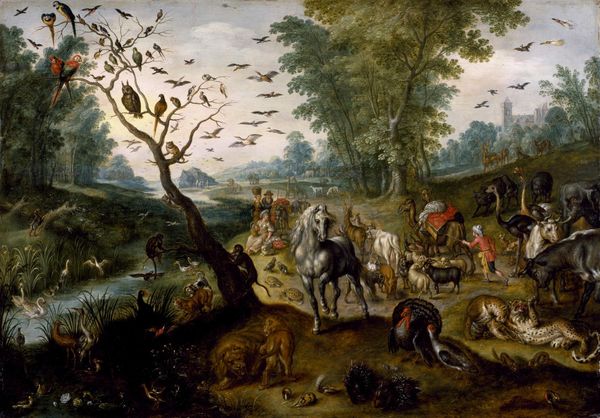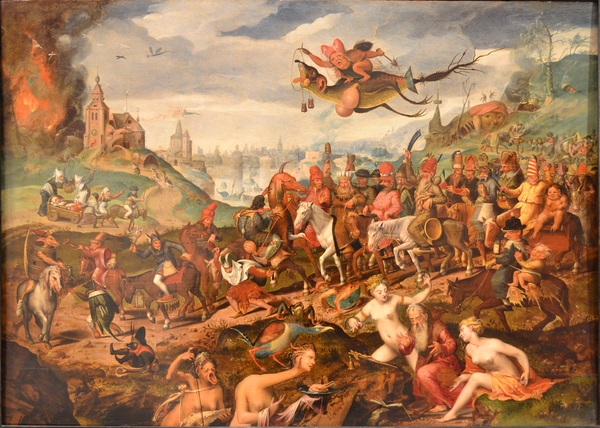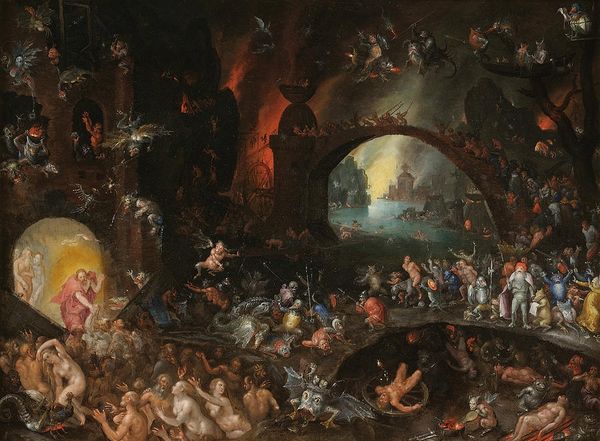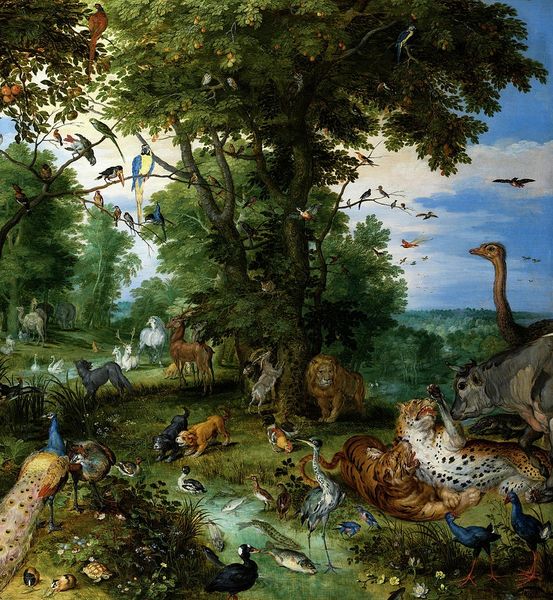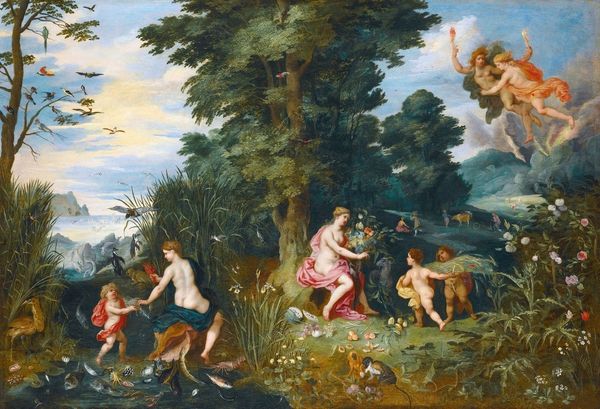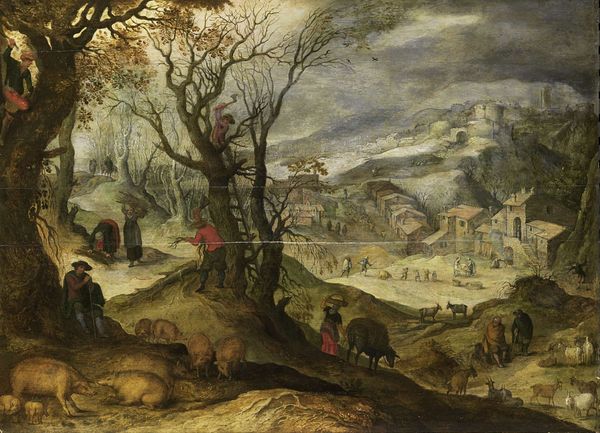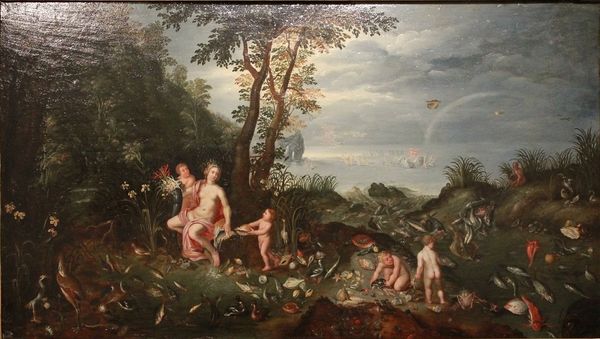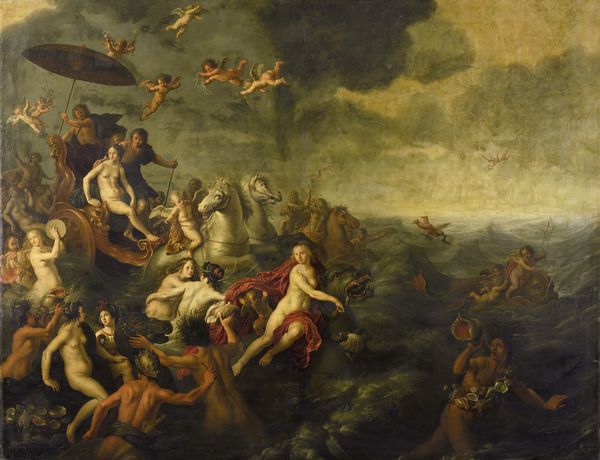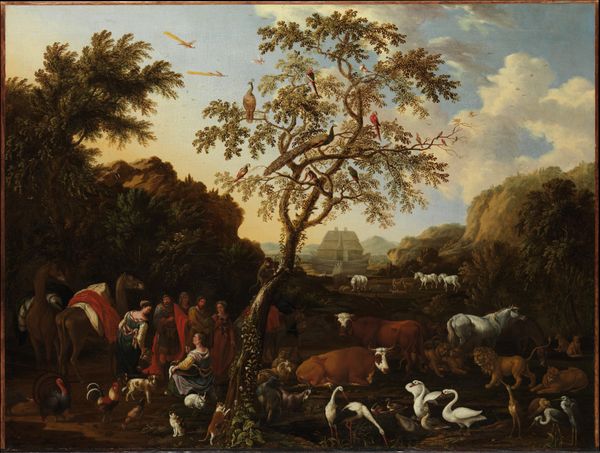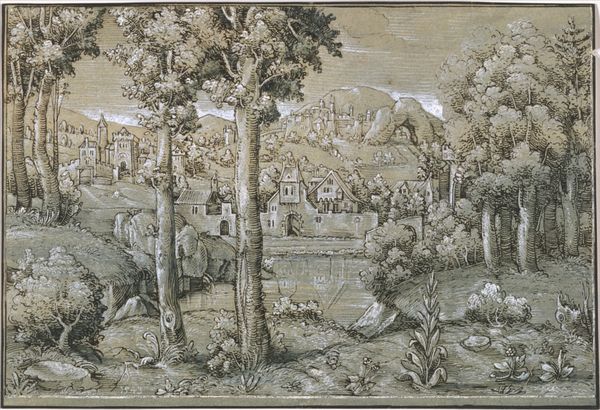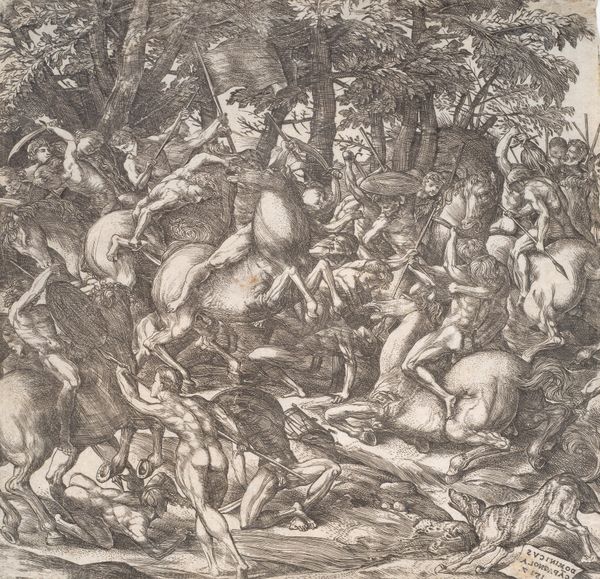
painting, oil-paint
#
gouache
#
water colours
#
baroque
#
painting
#
oil-paint
#
landscape
#
fantasy-art
#
oil painting
#
genre-painting
#
history-painting
#
realism
Dimensions: 64.5 cm (height) x 82.5 cm (width) (Netto), 74.3 cm (height) x 91.2 cm (width) x 4.3 cm (depth) (Brutto)
Editor: So, here we have "The Earth after the Fall of Man," an oil painting from 1690 by Franz Rösel von Rosenhof, currently residing at the SMK. It strikes me as wonderfully chaotic, like a zoological fever dream. All those animals crammed together! What do you see when you look at this piece? Curator: Chaotic is a good word! For me, it’s a landscape vibrating with a nervous energy. Look at how Rosenhof throws animals together, biblical and exotic— a bizarre menagerie painted with an almost unsettling precision. What's more unsettling: the knowledge that humans aren't there, or that if we were, we'd be powerless to impact what already happened? What kind of world exists when humans remove themself? Editor: So it’s more than just animals; it’s an entire ecosystem without us, but bearing our legacy? That’s fascinating. Are those winged creatures mythical, like that lion? Curator: Absolutely! Rosenhof blends reality and fantasy. I imagine him hunched over, painting in a dimly lit study, lost in his own world while the actual world outside buzzed with very real problems. Creating an imaginary place like this seems like an…escape? What's more powerful, depicting a scene of loss or the space of imagining and visualizing it? Editor: It’s definitely got that escapist vibe now that you mention it, like a proto-fantasy novel cover. I originally felt a kind of manic energy but also see the sadness in humanity’s absence now, a ghostly footprint if you will. Curator: Exactly! It’s a melancholic fantasy, really. The end is already over; all we're left with is Rosenhof’s echo. I can think of worse bequests. Editor: Agreed! It makes me appreciate how much the fantastic can speak to real anxieties and past events. Thanks for sharing your perspective!
Comments
statensmuseumforkunst almost 2 years ago
⋮
The two paintings show what happened when Adam and Eve ate from the Tree of Knowledge. From all creatures living peacefully side by side in plenty, to a barren world ravaged by murder and mayhem. These are moral object lessons; not zoology. Obviously the artist did not study living animals, but copied older sources instead. In the depiction of Earth, animals from every corner of the world mingle with imaginary creatures. In front of the two paintings learned spectators could amuse themselves by seeing how many they might name and recognize from books and other popular depictions. On the threshold of the modern era, belief in Christian traditions had become more abstract. Perhaps von Rosenhof's paintings do not so much convey a religious message as they provide a humorous illustration of the philosopher Thomas Hobbes' (1588 1679) thesis that without sovereign government we risk a war of all against all.
Join the conversation
Join millions of artists and users on Artera today and experience the ultimate creative platform.
